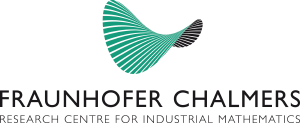Abstract
Automatic robot trajectory generation can reduce production time and material use in automotive manufacturing. This thesis proposes a geometric approach to formulate a nonlinear constrained optimization problem. The objective is to compute an initial Tool Center Point (TCP) path that achieves a uniform height distribution along two curves that define the desired sealant edges. The initial TCP path yields sufficient trajectories for a wide range of curves. However, in scenarios involving sharp edges, some limitations related to the physical limitations of mechanical devices restrict the range of feasible sealants. The geometric approach does not consider all complex sealing behaviors. To capture the complexity of the sealing process while maintaining fast validation, a neural network was developed that predicts sealant cross-sections along a TCP path. An obstacle course that introduces unseen kinematic and spatial features was created to validate the network. The network performs well on simple geometries, but more development is required for the model to be deployable in practice. The geometric approach and the surrogate model build a framework for further optimization of the TCP path.
Read the full thesis here: Thesis Marcus Berg

